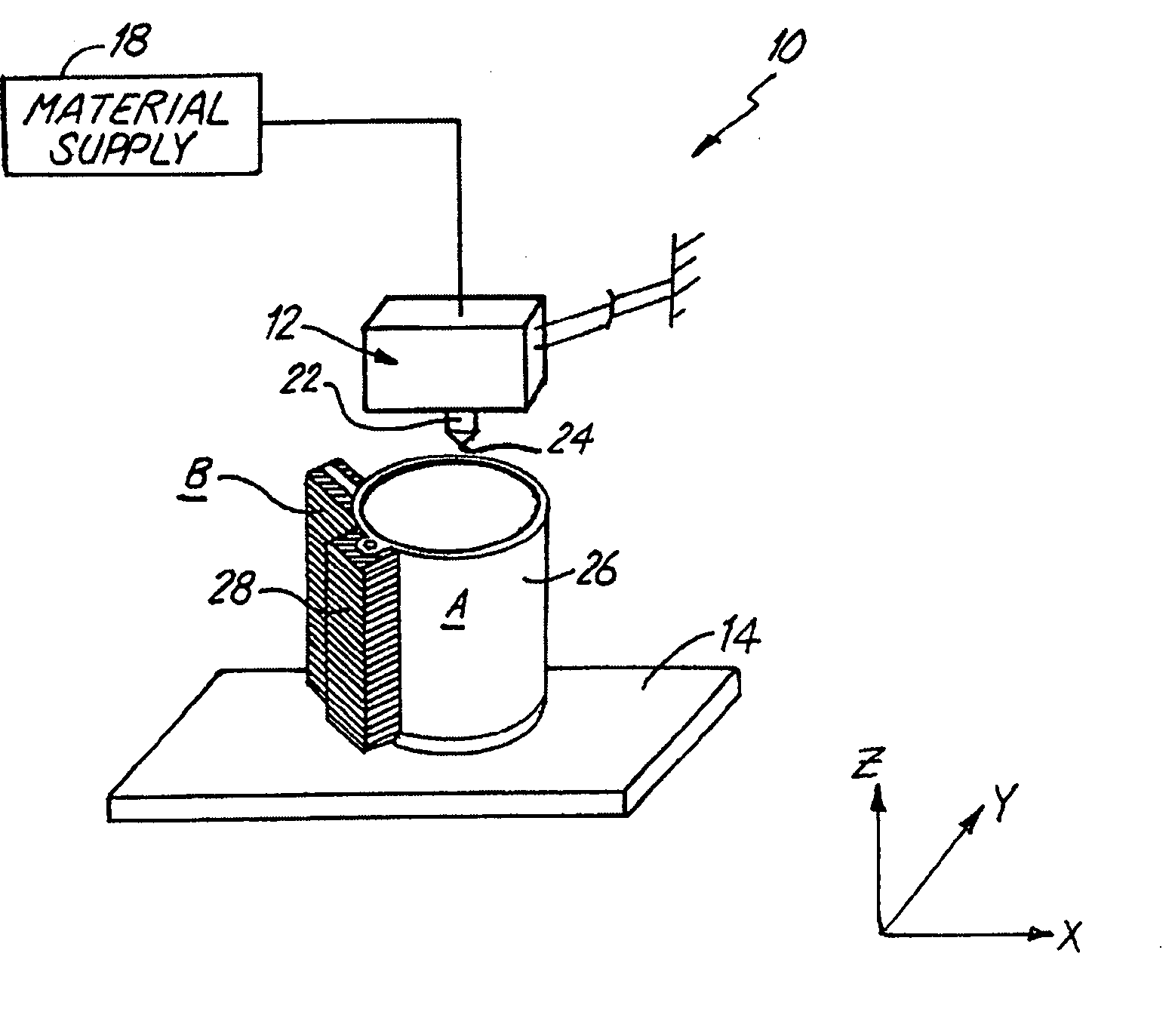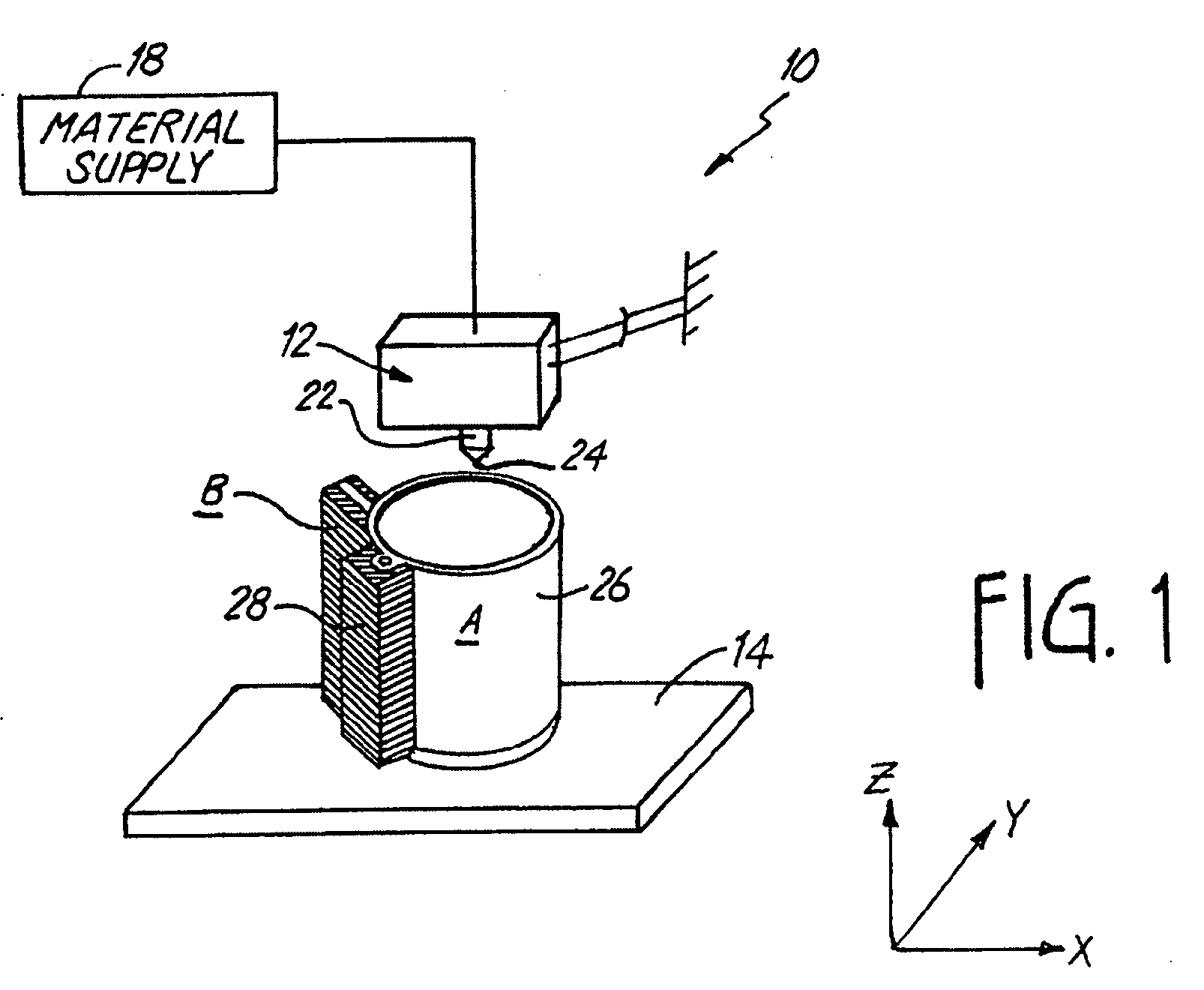Material and method for three-dimensional modeling
a three-dimensional modeling and material technology, applied in the field of three-dimensional object fabrication using additive process modeling techniques, can solve problems such as additional problems
- Summary
- Abstract
- Description
- Claims
- Application Information
AI Technical Summary
Problems solved by technology
Method used
Image
Examples
example 1
[0035] Models of various sizes were built in a build chamber having a temperature of about 200-225° C., using the polyphenylsulfone modeling material and a support material comprising a blend of polyphenylsulfone and amorphous polyamide. In some cases, the support material further included polysulfone. Weight percent ranges of the various component materials were between about 60 and 90 weight percent polyphenylsulfone, and between about 10 and 40 weight percent amorphous polyamide blend, or between about 60 and 90 weight percent polyphenylsulfone, between about 1 and 40 weight percent polysulfone and between about 10 and 40 weight percent amorphous polyamide blend. A particular exemplary resin tested is a blend of 50 weight percent Radel™ R 5600 NT polyphenylsulfone (available from BP Amoco), 25 weight percent Udel™ P 1710 NT 15 polysulfone (available from BP Amoco), and 25 weight percent EMS TR 70 amorphous polyamide (available from EMS-Chemie AG of Switzerland). This resin has a ...
example 2
[0037] Test models were built in a build chamber having a temperature of about 200-225° C., using the polyphenylsulfone modeling material and a support material which comprised various resins of polyethersulfone, polyphenylsulfone or polyetherimide (i.e., Ultem™). These materials exhibited favorable thermal stability, but could not be broken away from the model. The support material containing polyphenylsulfone adhered very strongly to the model. The support material containing polyetherimide adhered fairy strongly to the model, and the support material containing polyethersulfone, while exhibiting the least adherence to the model, adhered too strongly for suitable use.
example 3
[0038] Large and small polyphenylsulfone models were built in a build chamber having a temperature of about 200-225° C., using a support material comprising a polyethersulfone base polymer and a silicone release agent. For convenience, commercially available compounds were used to provide a “masterbatch” containing silicone, which was compounded with the base polymer. Various masterbatches were tested, which included polypropylene, linear low-density polyethylene, and high-impact polystyrene. Additionally, various silicones were tested, ranging in viscosity from about 60,000 centistokes (intermediate viscosity) to 50 million centistokes (very high viscosity). The very high viscosity silicones have a high molecular weight, while the lower viscosity silicones have a lower molecular weight.
[0039] It was found that intermediate viscosity silicone was a much better release agent than the very high viscosity silicone, and that the high-impact polystyrene masterbatch released more easily ...
PUM
| Property | Measurement | Unit |
|---|---|---|
| temperature | aaaaa | aaaaa |
| heat deflection temperature | aaaaa | aaaaa |
| temperatures | aaaaa | aaaaa |
Abstract
Description
Claims
Application Information
 Login to View More
Login to View More - R&D
- Intellectual Property
- Life Sciences
- Materials
- Tech Scout
- Unparalleled Data Quality
- Higher Quality Content
- 60% Fewer Hallucinations
Browse by: Latest US Patents, China's latest patents, Technical Efficacy Thesaurus, Application Domain, Technology Topic, Popular Technical Reports.
© 2025 PatSnap. All rights reserved.Legal|Privacy policy|Modern Slavery Act Transparency Statement|Sitemap|About US| Contact US: help@patsnap.com


